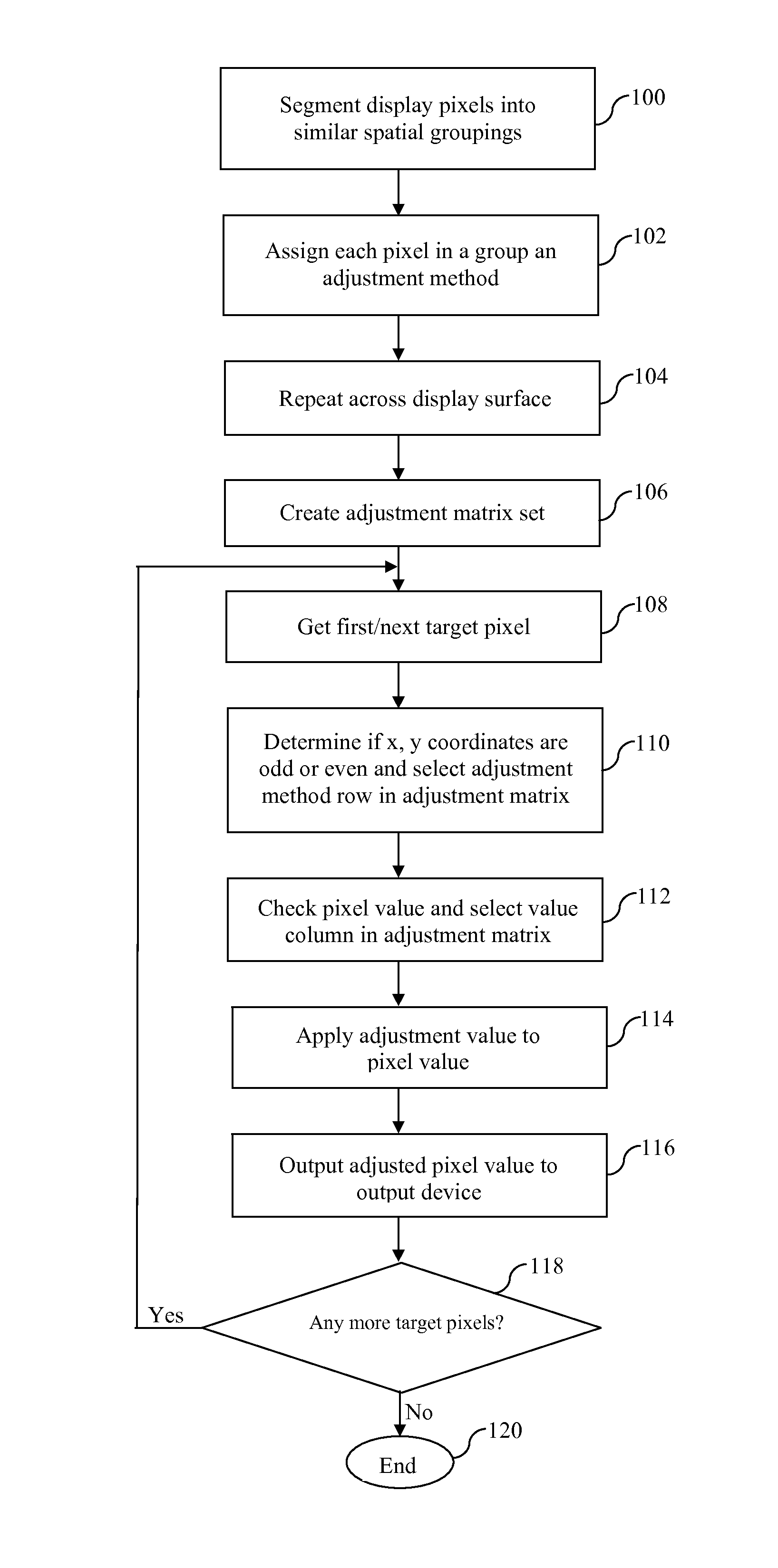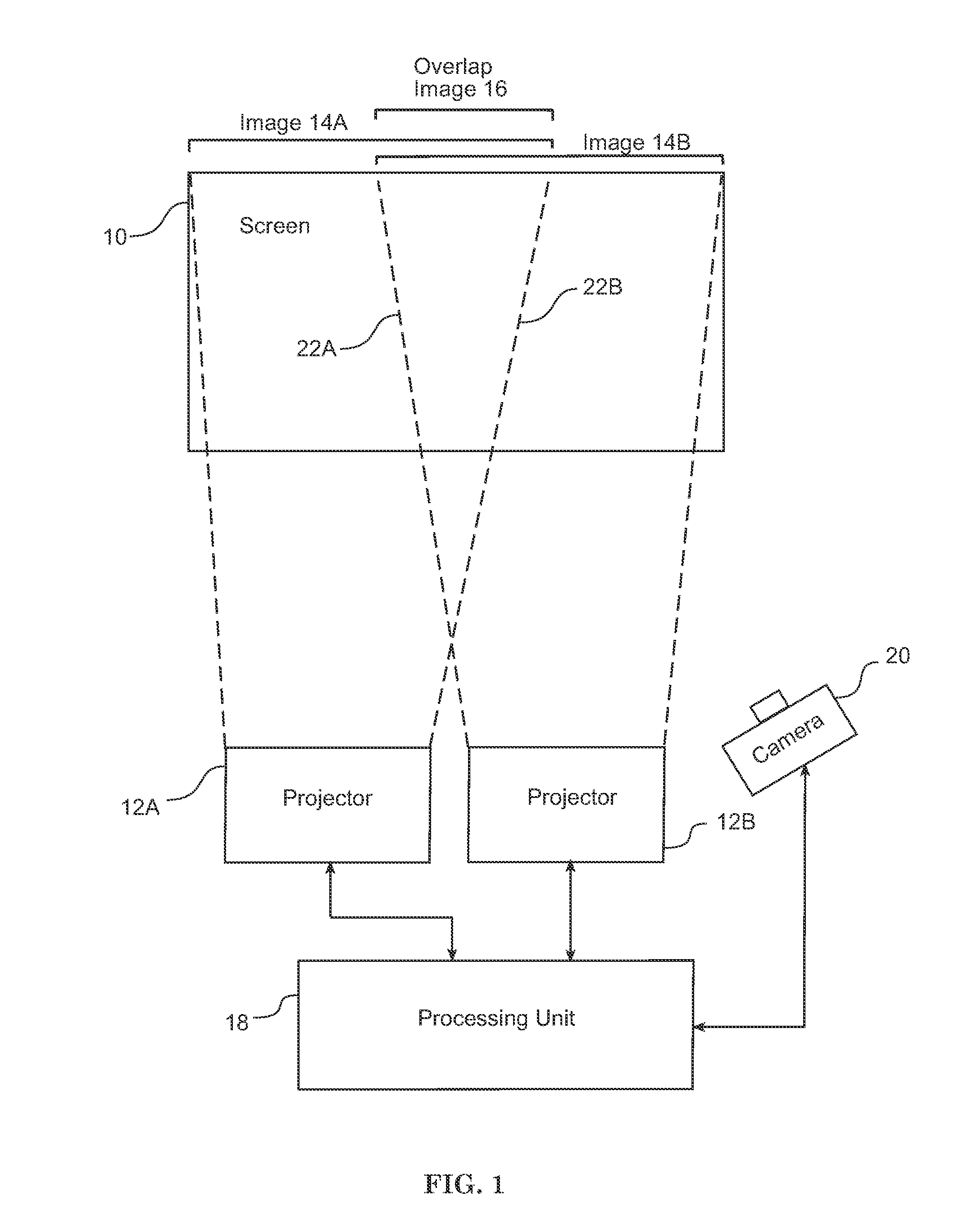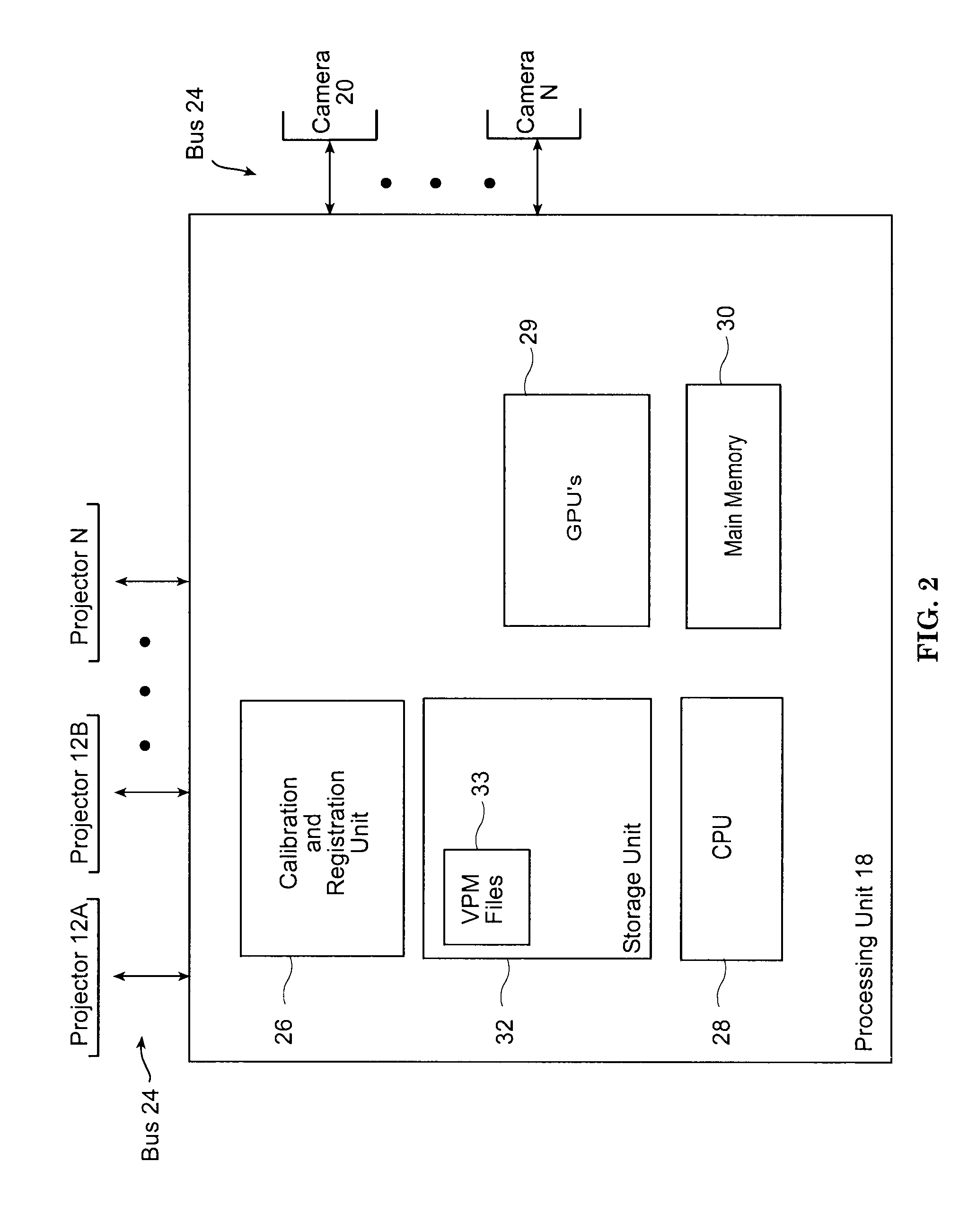Method For Spatial Smoothing In A Shader Pipeline For A Multi-Projector Display
a multi-projector display and shader pipeline technology, applied in the field of multi-projector systems, can solve the problems of reducing the visual color intensities of the output projector, and incorrectly simplifying the conditions that exist with the actual projector, so as to achieve more visually acceptable color perception, improve the visual color intensities, and improve the effect of output projector control
- Summary
- Abstract
- Description
- Claims
- Application Information
AI Technical Summary
Benefits of technology
Problems solved by technology
Method used
Image
Examples
Embodiment Construction
[0031]FIG. 1 shows a general system block diagram of the environment of the present invention. In this system, multiple projectors are controlled and coordinated to provide a large display region such as a wall display. In FIG. 1, just two projectors are illustrated for simplicity; however, in a large system three, four, or more projectors may be utilized. Eight projectors are used in an exemplary 2×4 configuration. As shown, projectors 12A and 12B each project an image onto a portion of the screen 10, with image 14A occupying one portion, image 14B occupying a second portion, and overlap image 16 occupying a portion that represents the intersection of images 14A and 14B projected onto screen 10. Using multiple projectors in this manner with overlapping and complementary projections can be used to provide a very large, but still very bright and clear, continuous display.
[0032]Various approaches are available to build the multi-projector display of FIG. 1. It is well known that in or...
PUM
 Login to View More
Login to View More Abstract
Description
Claims
Application Information
 Login to View More
Login to View More - R&D
- Intellectual Property
- Life Sciences
- Materials
- Tech Scout
- Unparalleled Data Quality
- Higher Quality Content
- 60% Fewer Hallucinations
Browse by: Latest US Patents, China's latest patents, Technical Efficacy Thesaurus, Application Domain, Technology Topic, Popular Technical Reports.
© 2025 PatSnap. All rights reserved.Legal|Privacy policy|Modern Slavery Act Transparency Statement|Sitemap|About US| Contact US: help@patsnap.com



